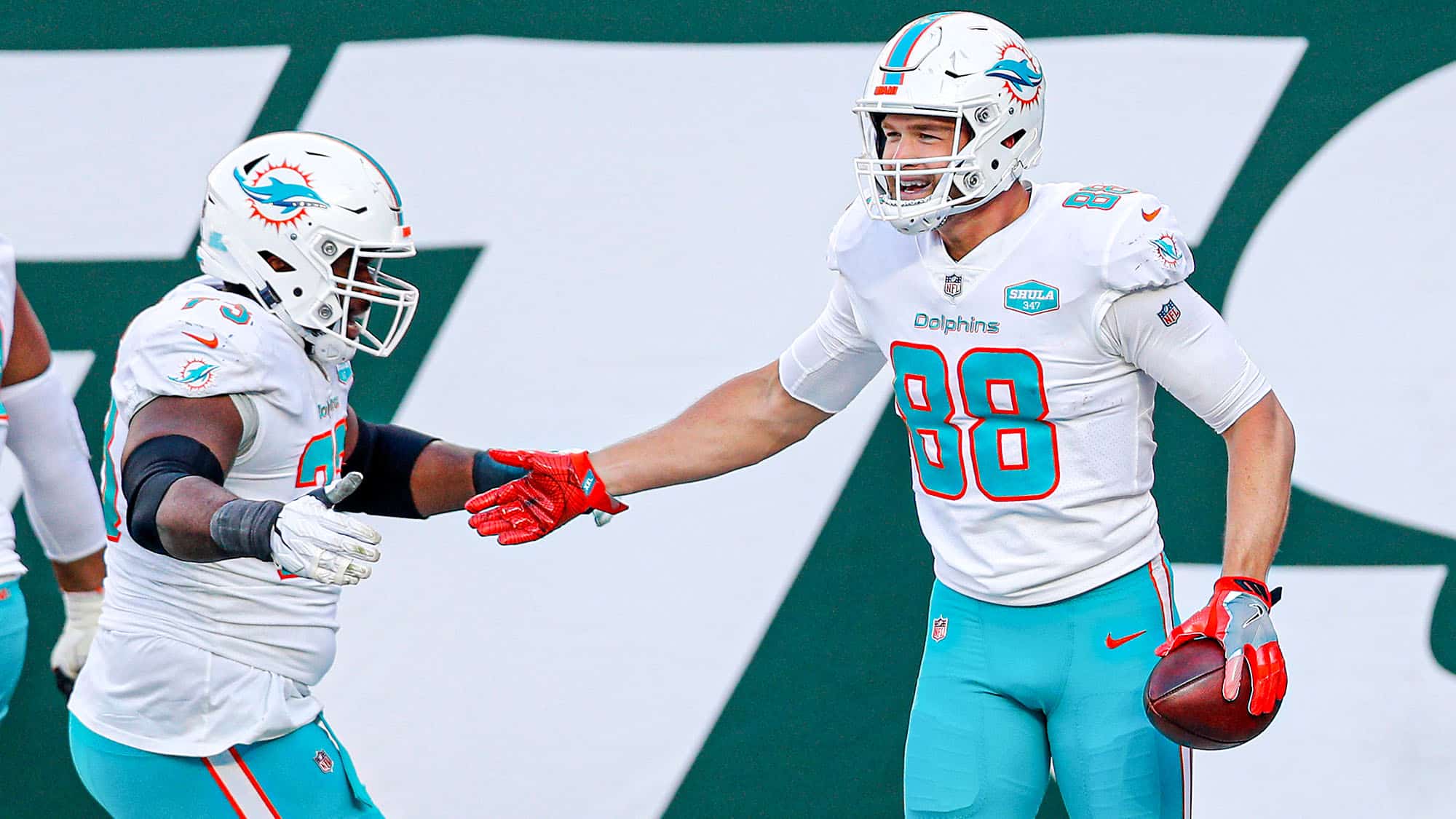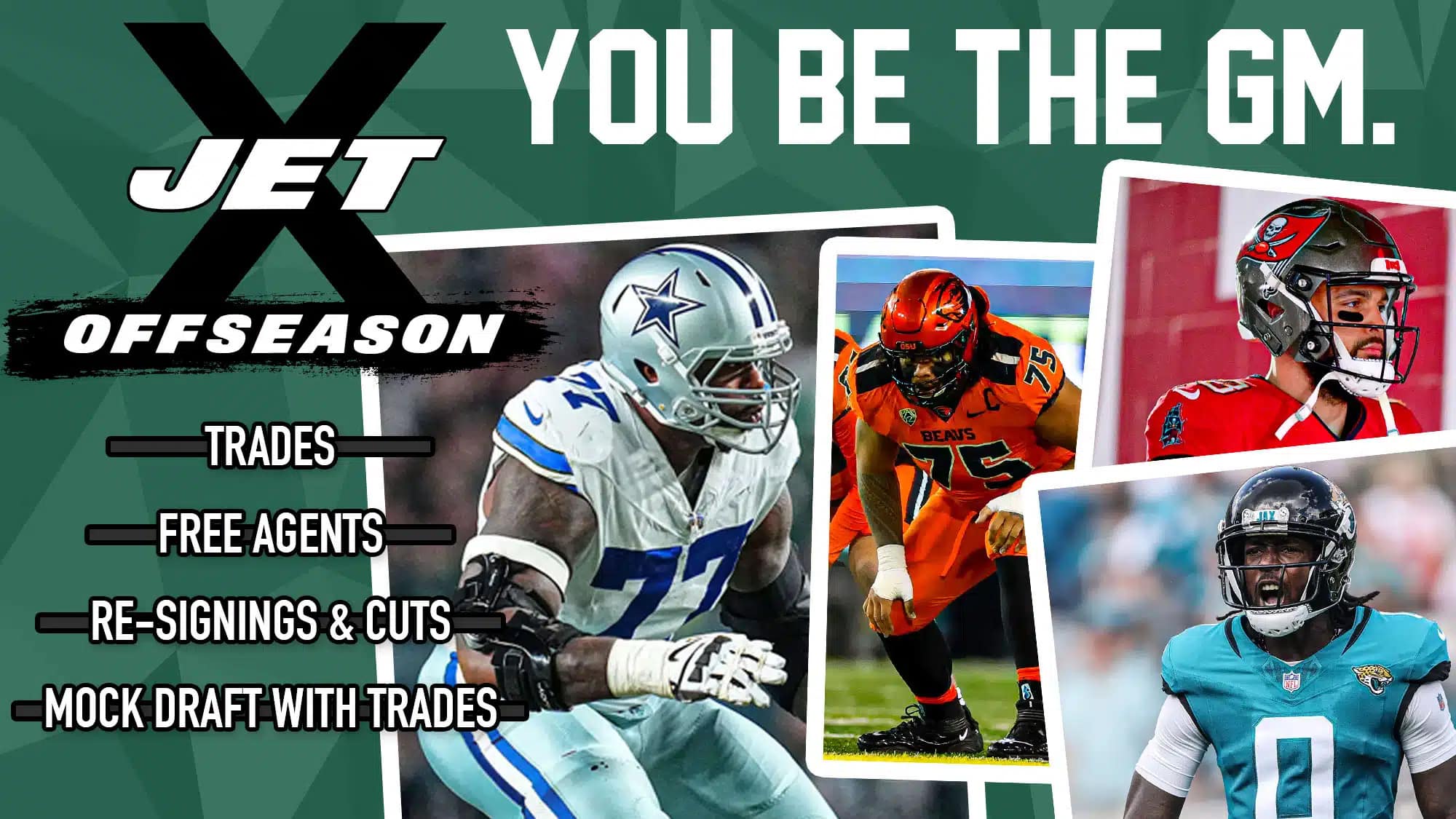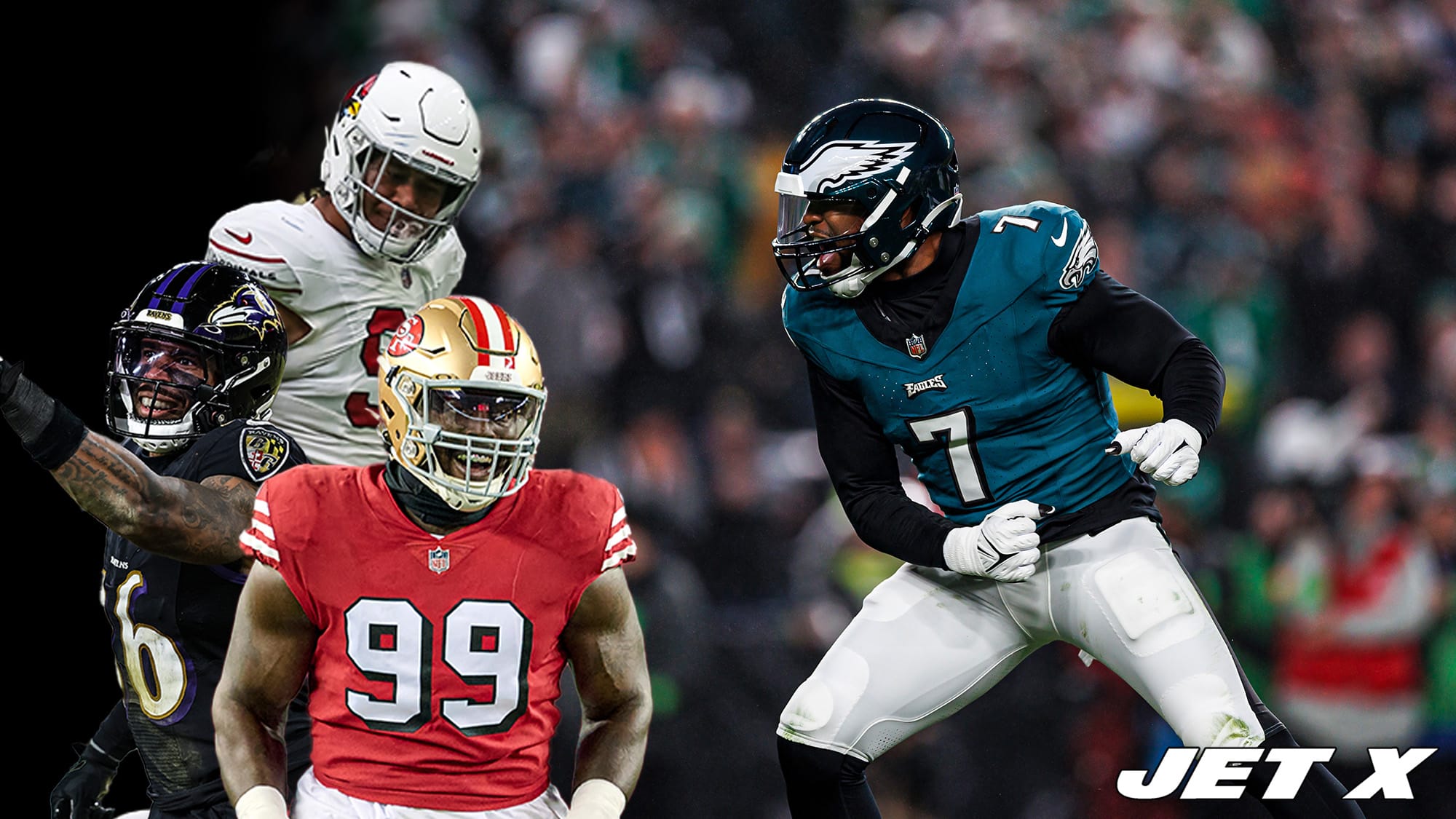The New York Jets should avoid Mike Gesicki
As the 2021 NFL regular season winds down, fans of ill-fated teams like the New York Jets are already mapping out the perfect offseason plan for their franchise to make a return to relevancy.
Jets fans have their eyes on the offensive side of the ball, seeking players that can help young quarterback Zach Wilson fulfill his sky-high potential.
One impending unrestricted free agent who has generated some interest within the world of Jets fandom is Miami Dolphins tight end Mike Gesicki. The Penn State product has 707 receiving yards this season, which ranks second among tight ends set to hit free agency behind Dalton Schultz.
Play: 👉 the Jet X Offseason Simulator
Tight end is an enormous need for the Jets, so, naturally, Gesicki looks like a great option for the Jets.
He’s not.
The primary reason for that is simple: Gesicki is a “tight end” in name only. Aside from his 6-foot-6, 247-pound frame, there is little about his game that matches the job description of a tight end in New York’s offensive scheme.
Gesicki has lined up in-line (attached to the offensive line while aligned in a three or four-point stance) on only 10.1% of his offensive snaps this year. That is by far the lowest rate in the league among tight ends. On passing plays, Gesicki lines up in-line just 6.4% of the time.
Most of the time, Gesicki is lined up either in the slot (56.7%) or out wide (30.4%). He’s basically a huge wide receiver.
That’s not what New York’s offensive scheme needs.
Coming from the Shanahan coaching tree, Jets offensive coordinator Mike LaFleur wants to build his offense around two-tight end packages (12 personnel). Those looks allow the Jets to establish the run game so they can build play-action passing concepts off of the run threat.
To execute such an offense effectively, it is essential to have tight ends who can block. If your tight ends cannot block, you are not going to run the ball effectively out of 12 personnel, and if you cannot run the ball effectively out of heavy-personnel looks, your play-action game is not going to work.
LaFleur tried to make the Jets a 12 personnel-heavy offense early in the year, but due to the porous blocking of their tight ends, it wasn’t working. The Jets could not run the ball well to the outside, and in turn, their play-action game was poor. Plus, young Zach Wilson was forced to operate out of many third-and-long situations due to terrible results from early-down rush attempts.
So, LaFleur adapted after the bye week and stopped relying on the tight ends so much, drastically decreasing his 12 personnel usage while using far more 11 personnel (3 WR/1 RB/1 TE) and 10 personnel (4 WR/1 RB/0 TE) to get more talent and speed on the field.
The Jets have been much better offensively since making those changes, but they still have not been great. For this scheme to hit its ceiling, the Jets need quality tight ends who fit their mold – which is a guy who can line up in-line and scare the defense as both a pass-catcher and as a blocker.
Gesicki is not that guy.
There is a reason that Gesicki almost never lines up in-line: it’s because he can’t block.
Gesicki has a run-blocking grade of 44.3 at Pro Football Focus this year. That is the fifth-worst mark in the NFL out of 93 qualified tight ends.
This is nothing new for Gesicki:
- 2020: 52.8 run-blocking grade (74th of 88 TEs)
- 2019: 48.3 run-blocking grade (65th of 76 TEs)
- 2018: 42.0 run-blocking grade (86th of 89 TEs)
Gesicki also struggles mightily in pass protection. He has given up 11 pressures on 80 pass-blocking snaps in his career, a rate of 13.8% that is nearly double the typical league average for tight ends (7%).
Miami is fully aware of Gesicki’s blocking woes and makes sure he rarely has to do it. He typically comes off the field in obvious running situations, as only 27.9% of his snaps this season came on run plays, the sixth-lowest rate among 88 qualified tight ends.
The Dolphins also ensure he almost never pass-blocks. Gesicki has stayed in to protect the quarterback on only nine of his 731 offensive snaps, just 1.2%, the second-lowest rate among qualified tight ends.
New York’s offense could not operate with this type of player as its primary tight end.
Take a look at LaFleur’s former home, San Francisco. There, George Kittle paints the mold of what a No. 1 tight end in this scheme must be able to do.
While Kittle is a household name thanks to his receiving abilities, he also carries a huge blocking load. Kittle ranks fourth among tight ends in run-blocking snaps this season (304) and 14th in pass-blocking snaps (56). He has a PFF blocking grade of over 72 in both phases.
Kittle does most of that work in the trenches. He lines up in-line on 71.9% of his snaps.
The Jets need a dual-threat in-line tight end like Kittle, not a glorified wide receiver like Gesicki.
A multi-faceted player like Kittle allows the offense to do whatever it wants in any situation. The defense does not know what to expect when Kittle goes out and sticks his hand in the dirt on the end of the line. He can beat them as the lead blocker on an outside zone run or as the primary read in a play-action passing concept, and the opponent has to respect both possibilities. This helps the offense establish threats and build off of them.
Conversely, one-dimensional players like Gesicki make it easy for the defense to anticipate things. If he’s out there, the defense knows there is a high likelihood of a passing play, and if it is a pass, they know for sure that he isn’t staying in to pass-block.
Additionally, since they don’t respect his blocking ability or think the offense would want to run with him in the game, defenders are less likely to bite on play fakes.
This type of tight end does little to help a team run the football, facilitate a play-action game, or create unpredictability – three things that are essential in Mike LaFleur’s offense.
Scheme fit is important when evaluating whether a football player can help a team win. While coaches can adapt their scheme to match their talent to a certain extent, it makes everybody’s life easier to add players who are a natural fit for the team’s core philosophies.
Gesicki’s estimated market value is $11 million per year, per Spotrac. That is simply too high of a cost for the Jets to invest in a player who would be a square peg in a round hole.













Gesicki is central to the Dolphin Offense, can’t see how Miami let’s him walk.
Agreed, he fits in with what they want to do offensively. And as much as they shouldn’t let him go, he shouldn’t want to leave, as that team is a good place for his skillset to be maximized
Great article and analysis Michael.
Thanks!